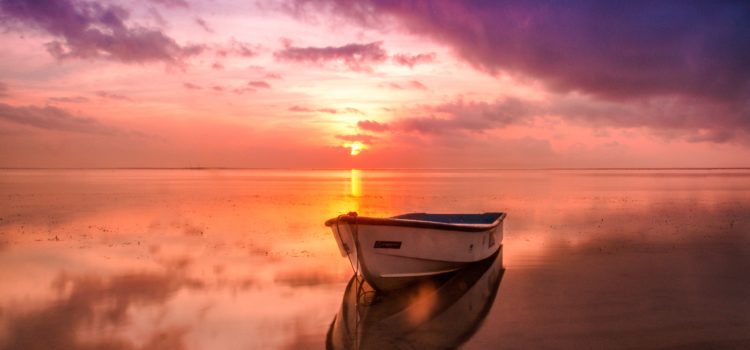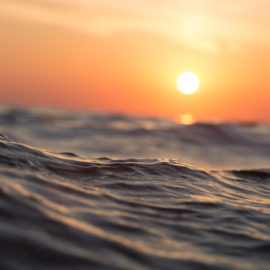

This article is an excerpt from the Shortform book guide to "Endurance" by Alfred Lansing. Shortform has the world's best summaries and analyses of books you should be reading.
Like this article? Sign up for a free trial here .
How did the crew of the Endurance survive? How did the crew live on ice glaciers?
Alfred Lansing’s book Endurance recounts the Endurance crew’s journey home against impossible odds. What started as an expedition to Antarctica turned into years of living on ice and islands.
Find out the most incremental moments that helped the Endurance crew survive the harsh conditions.
Abandoning the Endurance
On October 23, 1915, the Endurance became trapped by three ice floes that split it in half. Lansing recounts how the crew tried for three days to save the ship.
On the second day, the side of the ship was completely deformed by the ice. The crew’s leader, Ernest Shackleton ordered the men to lower all the essential items onto a nearby floe. On day three, more water reached the deck and froze there, weighing the ship down.
On October 27, 1915, nine months after the ship got stuck in the ice, they realized it was a losing battle and decided to leave the ship. They took 49 huskies, essential gear, and two lifeboats down to the ice. They set up camp on a floe, but they quickly had to move again when it started breaking up. Lansing describes how, less than an hour after the last man had gotten off the ship, a piece of ice pierced the side of the Endurance, and the water coming in caused it to partly submerge.
They were now in the Weddell Sea, halfway between the South Pole and the nearest populated town 1,200 miles away. Shackleton planned to get to Paulet Island, which was 346 miles away. So how did the crew of the Endurance survive?
Living on the Ice Floes
After leaving the ship, Shackleton and his crew set up several different camps on ice floes while they waited for better weather conditions to continue their journey. They had to move camps often because their floe cracked or melted, and they eventually abandoned the floes and got on their boats when the ocean drift took them away from the islands they were aiming for. Lansing narrates their moves in detail, as well as the mood changes among the crew during this time.
Setting Up Ocean Camp
Their first ice floe camp was Ocean Camp. Advancing by foot and dragging sledges and boats, they managed to walk only two miles in two days from the place the Endurance had sunk. When the ice became impossible to get through with the sledges and boats, they decided to camp on a massive floe and let the drift take them away from the ice pack surrounding Antarctica.
While they lived at Ocean Camp, they went back to the Endurance several times to retrieve the third lifeboat, food stores, and personal items. Even though the ship was filled with water, some items were still salvageable. But Lansing explains that they stopped the trips back to the ship when a blizzard carried the entire floe north, away from Antarctica.
The Endurance Crew’s Heartbreaking Sacrifice
Eventually, Shackleton ordered most of the dogs killed so they wouldn’t have to use their own food rations to feed them. Many of the men felt the loss deeply and blamed Shackleton’s lack of food planning for the tragedy.
Killing the dogs didn’t resolve the problem of a diminishing food supply, and hunger increased as their rations declined each day. Some men began to make jokes about cannibalism. They held off on eating the remaining dogs in case they needed them to make a sledge trip back to Ocean Camp to retrieve the food stores they had left there. Hunger also made the cold more biting because they had fewer daily calories to warm their bodies. To make matters worse, most meals were cold to save the remaining blubber (used as cooking fuel) for emergencies.
In addition, health issues plagued them. One of the men collapsed from hunger after a hunting trip. They all suffered from constipation because they mostly ate seal meat, and from chafing because they didn’t have toilet paper and had to make do with snow. Sores also developed on their faces from the wind and ice.
They eventually had to kill all the dogs and puppies for meat. Some of the men were upset but knew it was necessary. They enjoyed the dog meat for a change after months of eating seals and penguins.
Arriving at Elephant Island
On April 15, 497 days after they were last on firm land and eight days rowing through the ice, they finally reached land: Elephant Island. As they landed, several men collapsed in exhaustion and pain. One had a heart attack, and three were unable to walk. Despite those difficulties, Lansing explains that they were elated to be on land. There was plenty of wildlife on the island, so they could finally hunt and eat fresh food. There was also a glacier where they could collect ice to melt for drinking water. Elephant Island would be key to how most of the Endurance crew survived.
Making a Plan for Rescue
After taking time to rest, Shackleton announced on April 20 that he would take five men and the largest boat and sail 800 miles to South Georgia Island to find rescue.
Before leaving, Lansing recounts that Shackleton had long conversations with his second-in-command, who would stay on the island, so the man would know exactly what to do in any situation. Shackleton left a letter in his diary, passing responsibility to him for the camp, the men, and the boats. Shackleton also left a letter in the photographer’s diary, bequeathing him all rights for the photographs taken during their expedition, if Shackleton didn’t survive.
As soon as the weather became milder, they got the biggest boat ready. On April 24, Shackleton and his smaller crew sailed away as the rest gave them three cheers from the shore.
Accomplishing the Final Rescue
Lansing tells us that while at Stromness, Shackleton made several attempts to rescue the rest of his crew on Elephant Island. They tried to rescue them with three different ships, but none was strong enough to get through the ice pack, and each time they had to turn back.
After three failed attempts, Shackleton finally returned to Elephant Island on August 30, 1916. Shackleton had convinced the Chilean government to lend him a steel ship and on August 25 he left Stromness and returned five days later with every last man alive. All 22 members of the Endurance crew survived.

———End of Preview———
Like what you just read? Read the rest of the world's best book summary and analysis of Alfred Lansing's "Endurance" at Shortform .
Here's what you'll find in our full Endurance summary :
- The story of the Endurance, an expedition ship that sunk on its way to Antarctica
- The crew's journey of survival and their search for rescue
- How Ernest Shackleton lead the crew to safety







Tom Crean from County Kerry was second lieutenant on the Endurance.
His grandson, Rev. Fr. Gerard O’Brien lives in Long Beach, California
He has been a priest for a number of years in the Archdiocese of Los Angeles.
He is retiring and returning to live in Ireland at the end of June.
I have known for Gerard for a number of years, we are both from the same county, County Kerry, Ireland.
I thought it might be of interest to you.
Regards Hannah O’Callaghan